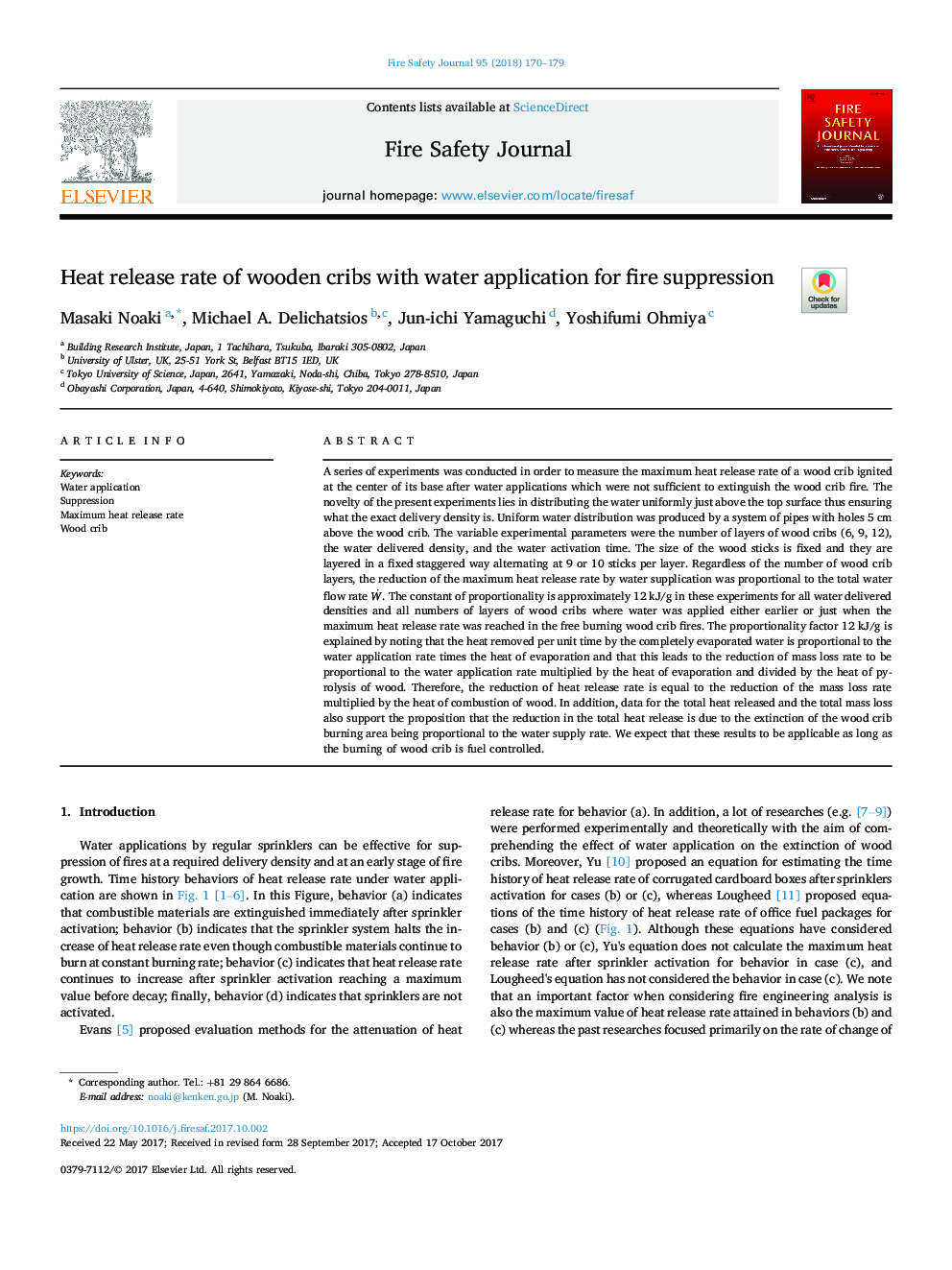| Article ID | Journal | Published Year | Pages | File Type |
|---|---|---|---|---|
| 6741924 | Fire Safety Journal | 2018 | 10 Pages |
Abstract
A series of experiments was conducted in order to measure the maximum heat release rate of a wood crib ignited at the center of its base after water applications which were not sufficient to extinguish the wood crib fire. The novelty of the present experiments lies in distributing the water uniformly just above the top surface thus ensuring what the exact delivery density is. Uniform water distribution was produced by a system of pipes with holes 5Â cm above the wood crib. The variable experimental parameters were the number of layers of wood cribs (6, 9, 12), the water delivered density, and the water activation time. The size of the wood sticks is fixed and they are layered in a fixed staggered way alternating at 9 or 10 sticks per layer. Regardless of the number of wood crib layers, the reduction of the maximum heat release rate by water supplication was proportional to the total water flow rate WË. The constant of proportionality is approximately 12Â kJ/g in these experiments for all water delivered densities and all numbers of layers of wood cribs where water was applied either earlier or just when the maximum heat release rate was reached in the free burning wood crib fires. The proportionality factor 12Â kJ/g is explained by noting that the heat removed per unit time by the completely evaporated water is proportional to the water application rate times the heat of evaporation and that this leads to the reduction of mass loss rate to be proportional to the water application rate multiplied by the heat of evaporation and divided by the heat of pyrolysis of wood. Therefore, the reduction of heat release rate is equal to the reduction of the mass loss rate multiplied by the heat of combustion of wood. In addition, data for the total heat released and the total mass loss also support the proposition that the reduction in the total heat release is due to the extinction of the wood crib burning area being proportional to the water supply rate. We expect that these results to be applicable as long as the burning of wood crib is fuel controlled.
Keywords
Related Topics
Physical Sciences and Engineering
Engineering
Civil and Structural Engineering
Authors
Masaki Noaki, Michael A. Delichatsios, Jun-ichi Yamaguchi, Yoshifumi Ohmiya,
